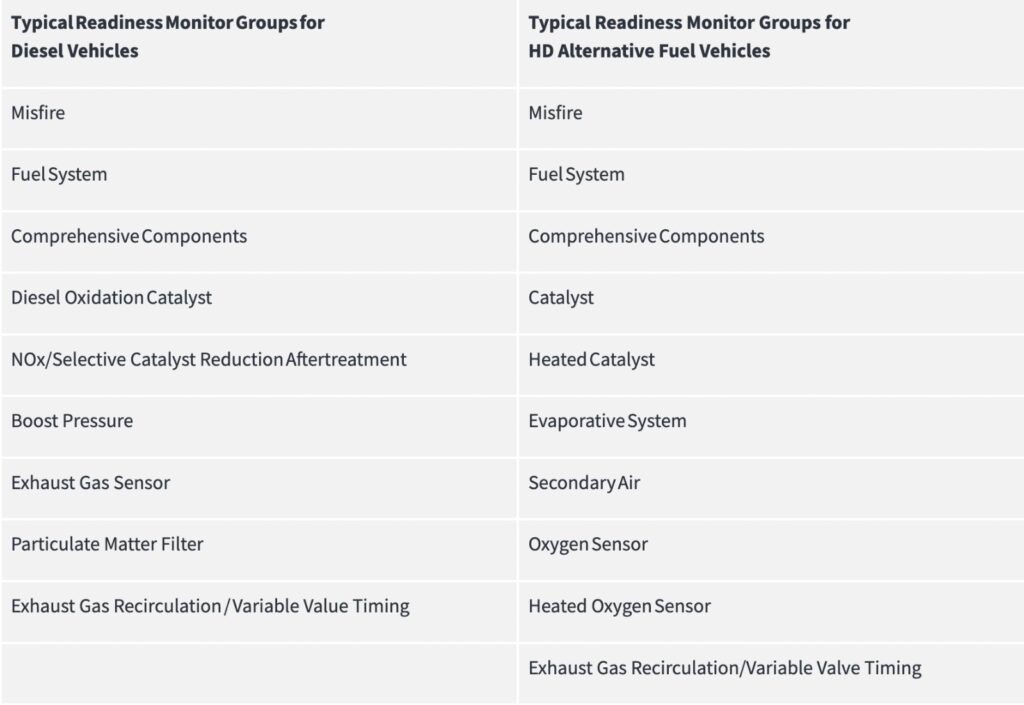Understanding On-Board Diagnostic (OBD) Systems On-Board Diagnostic (OBD) systems are built into vehicle computers to monitor components affecting emissions. If an emissions-related issue is detected, the OBD system activates a warning light on the dashboard and stores information to assist with repairs.
To ensure OBD systems work effectively, vehicles need sufficient operation to complete full diagnostic cycles. If an OBD system is reset (e.g., after battery disconnection or code clearing), it requires time and operation to return to a fully ready state.
Program Adjustment for OBD Readiness Testing The Clean Truck Check program is easing into OBD readiness requirements. Minimum operation thresholds are gradually increasing to ensure readiness criteria are met.
Current OBD Testing Readiness Criteria
Vehicles must complete at least five (5) Warm-Up Cycles (WUCs) since codes were cleared. Tests with fewer than 5 WUCs will result in a “Not Ready” outcome and fail compliance requirements.
Vehicles Subject to OBD Testing
Heavy-duty diesel vehicles and diesel hybrids with 2013 and newer engines. Alternative fuel and hybrid vehicles with 2018 and newer engines.
Purpose of OBD Systems
Monitor emission control systems. Identify systems needing repair. Alert drivers of issues. Aid technicians in diagnosis and repair. Promote durable emission control systems.
Core Elements of the OBD Test
- Malfunction Indicator Light (MIL) Status: The MIL indicates emissions-related issues. If the MIL is ON due to diagnostic trouble codes (DTCs), the vehicle will fail the test.
- Monitor Readiness: OBD systems must confirm readiness for compliance testing. Vehicles recently reset or cleared will require further operation before testing.
- Operation Since Codes Cleared (OSC): Vehicles must track and meet minimum thresholds for warm-up cycles, distance traveled, or engine run time.
- Permanent Diagnostic Trouble Codes (PDTCs):
PDTCs cannot be cleared manually and indicate unresolved issues. Vehicles with PDTCs will fail unless sufficient operation since code clearing has been completed.
Preparation for Clean Truck Check OBD Tests
Address Repairs Promptly: If the MIL is on, repair the vehicle before testing.
Test Early: Complete the OBD test early in the compliance window to allow for potential retesting.
Avoid Code Clearing: Minimizing code clearing avoids delays in readiness.
Document Repairs: If repairs require code clearing, conduct a test before and after repairs and keep receipts for proof.
For more detailed information or assistance with compliance testing, contact CLEAN TRUCK CHECK LLC.
